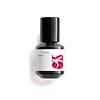What's inside
What's inside
 Key Ingredients
Key Ingredients

 Benefits
Benefits

 Concerns
Concerns

 Ingredients Side-by-side
Ingredients Side-by-side

Water
Skin ConditioningEthoxydiglycol
HumectantVaccinium Myrtillus Fruit Extract
Skin ConditioningDimethyl Isosorbide
SolventSalicylic Acid
MaskingLactic Acid
BufferingSaccharum Officinarum Extract
MoisturisingGlycerin
HumectantCitrus Aurantium Dulcis Fruit Extract
MaskingCitrus Limon Fruit Extract
MaskingSodium Levulinate
Skin ConditioningAcer Saccharum Extract
Skin ConditioningDiutan Gum
Melaleuca Alternifolia Leaf
AbrasiveSodium Anisate
AntimicrobialMentha Australis Leaf Extract
Skin ConditioningButylene Glycol
HumectantSantalum Spicatum Seed Oil
Skin ConditioningCitrus Aurantium Dulcis Oil
MaskingCitrus Aurantium Bergamia Leaf Oil
AstringentJuniperus Mexicana Oil
MaskingPelargonium Graveolens Oil
MaskingCitrus Aurantium Amara Flower Oil
MaskingEugenia Caryophyllus Leaf Oil
MaskingCitrus Aurantium Bergamia Fruit Oil
MaskingCitrus Grandis Peel Oil
MaskingCitrus Limon Peel Oil
MaskingLitsea Cubeba Fruit Oil
MaskingPentylene Glycol
Skin ConditioningMagnesium Aspartate
Skin ConditioningZinc Gluconate
Skin ConditioningCitrus Australasica Fruit Extract
AntioxidantSodium Benzoate
MaskingCitric Acid
BufferingCopper Gluconate
Skin ConditioningPotassium Sorbate
PreservativeGlycine
BufferingSerine
MaskingGlutamic Acid
HumectantAspartic Acid
MaskingLeucine
Skin ConditioningAlanine
MaskingLysine
Skin ConditioningArginine
MaskingTyrosine
MaskingPhenylalanine
MaskingProline
Skin ConditioningThreonine
Valine
MaskingIsoleucine
Skin ConditioningHistidine
HumectantLimonene
PerfumingCitral
PerfumingLinalool
PerfumingCitronellol
PerfumingWater, Ethoxydiglycol, Vaccinium Myrtillus Fruit Extract, Dimethyl Isosorbide, Salicylic Acid, Lactic Acid, Saccharum Officinarum Extract, Glycerin, Citrus Aurantium Dulcis Fruit Extract, Citrus Limon Fruit Extract, Sodium Levulinate, Acer Saccharum Extract, Diutan Gum, Melaleuca Alternifolia Leaf, Sodium Anisate, Mentha Australis Leaf Extract, Butylene Glycol, Santalum Spicatum Seed Oil, Citrus Aurantium Dulcis Oil, Citrus Aurantium Bergamia Leaf Oil, Juniperus Mexicana Oil, Pelargonium Graveolens Oil, Citrus Aurantium Amara Flower Oil, Eugenia Caryophyllus Leaf Oil, Citrus Aurantium Bergamia Fruit Oil, Citrus Grandis Peel Oil, Citrus Limon Peel Oil, Litsea Cubeba Fruit Oil, Pentylene Glycol, Magnesium Aspartate, Zinc Gluconate, Citrus Australasica Fruit Extract, Sodium Benzoate, Citric Acid, Copper Gluconate, Potassium Sorbate, Glycine, Serine, Glutamic Acid, Aspartic Acid, Leucine, Alanine, Lysine, Arginine, Tyrosine, Phenylalanine, Proline, Threonine, Valine, Isoleucine, Histidine, Limonene, Citral, Linalool, Citronellol
Water
Skin ConditioningAscorbic Acid
AntioxidantCyclohexasiloxane
EmollientGlycerin
HumectantAlcohol Denat.
AntimicrobialPotassium Hydroxide
BufferingPolymethylsilsesquioxane
Polysilicone-11
Dimethicone
EmollientPropylene Glycol
HumectantPentaerythrityl Tetraethylhexanoate
EmollientC13-14 Isoparaffin
EmollientTocopherol
AntioxidantSodium Hyaluronate
HumectantHydrolyzed Hyaluronic Acid
HumectantAdenosine
Skin ConditioningAcetyl Dipeptide-1 Cetyl Ester
Skin ConditioningPEG-20 Methyl Glucose Sesquistearate
EmulsifyingPoloxamer 338
EmulsifyingSalicylic Acid
MaskingPolyacrylamide
Toluene Sulfonic Acid
Ammonium Polyacryloyldimethyl Taurate
Emulsion StabilisingXanthan Gum
EmulsifyingCaprylyl Glycol
EmollientDisodium EDTA
BHT
AntioxidantLaureth-7
EmulsifyingParfum
MaskingWater, Ascorbic Acid, Cyclohexasiloxane, Glycerin, Alcohol Denat., Potassium Hydroxide, Polymethylsilsesquioxane, Polysilicone-11, Dimethicone, Propylene Glycol, Pentaerythrityl Tetraethylhexanoate, C13-14 Isoparaffin, Tocopherol, Sodium Hyaluronate, Hydrolyzed Hyaluronic Acid, Adenosine, Acetyl Dipeptide-1 Cetyl Ester, PEG-20 Methyl Glucose Sesquistearate, Poloxamer 338, Salicylic Acid, Polyacrylamide, Toluene Sulfonic Acid, Ammonium Polyacryloyldimethyl Taurate, Xanthan Gum, Caprylyl Glycol, Disodium EDTA, BHT, Laureth-7, Parfum
 Reviews
Reviews

Ingredients Explained
These ingredients are found in both products.
Ingredients higher up in an ingredient list are typically present in a larger amount.
Glycerin is already naturally found in your skin. It helps moisturize and protect your skin.
A study from 2016 found glycerin to be more effective as a humectant than AHAs and hyaluronic acid.
As a humectant, it helps the skin stay hydrated by pulling moisture to your skin. The low molecular weight of glycerin allows it to pull moisture into the deeper layers of your skin.
Hydrated skin improves your skin barrier; Your skin barrier helps protect against irritants and bacteria.
Glycerin has also been found to have antimicrobial and antiviral properties. Due to these properties, glycerin is often used in wound and burn treatments.
In cosmetics, glycerin is usually derived from plants such as soybean or palm. However, it can also be sourced from animals, such as tallow or animal fat.
This ingredient is organic, colorless, odorless, and non-toxic.
Glycerin is the name for this ingredient in American English. British English uses Glycerol/Glycerine.
Learn more about GlycerinSalicylic Acid (also known as beta hydroxy acid or BHA) is a well-known ingredient for treating skin that struggles with acne and clogged pores. It exfoliates both the skin's surface and deep within the pores to help clear out buildup, control oil, and reduce inflammation.
Unlike AHAs (alpha hydroxy acids), salicylic acid is oil-soluble. This allows it to penetrate into pores which makes it especially effective for treating blackheads and preventing future breakouts.
Salicylic acid is also known for its soothing properties. It has a similar structure to aspirin and can calm inflamed or irritated skin, making it a good option for acne-prone skin that is also sensitive.
Concentrations of 0.5-2% are recognized by the U.S. FDA as an over-the-counter topical acne product.
It can cause irritation and/or dryness if one's skin already has a compromised moisture barrier, so it's best to focus on repairing that before introducing this ingredient into your routine.
While salicylic acid does not increase sun sensitivity, it’s still important to wear sunscreen daily to protect your skin.
If you are looking for the ingredient called BHA or Butylated Hydroxyanisole, click here.
Learn more about Salicylic AcidWater. It's the most common cosmetic ingredient of all. You'll usually see it at the top of ingredient lists, meaning that it makes up the largest part of the product.
So why is it so popular? Water most often acts as a solvent - this means that it helps dissolve other ingredients into the formulation.
You'll also recognize water as that liquid we all need to stay alive. If you see this, drink a glass of water. Stay hydrated!
Learn more about Water